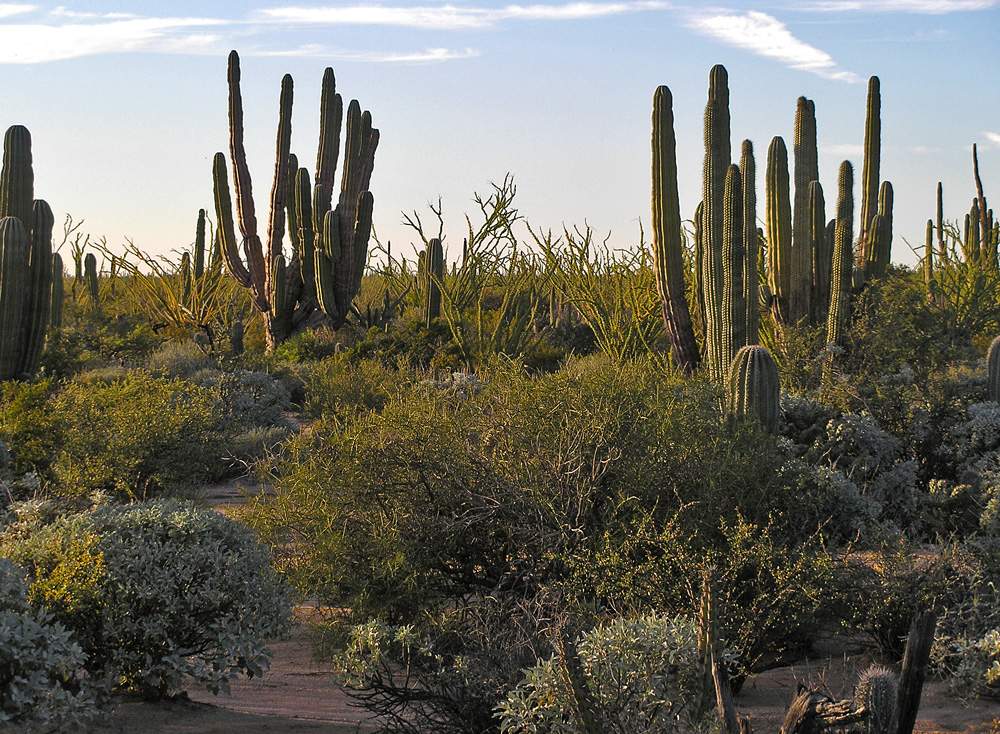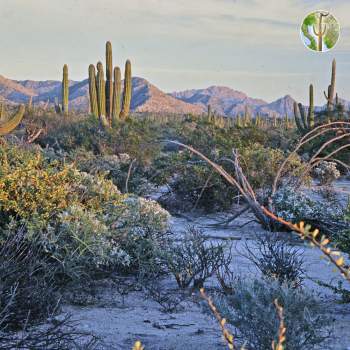Sonoran Desert - Central Gulf Coast
The Central Gulf Coast sub-division of the Sonoran Desert exists in west-central Sonora (as well as eastern Baja California) and hugs areas near the coastline. In Sonora it exists from just south of Guaymas to the coastline west of Caborca and generally extends inland around 50 to 80 kilometers.
It is extremely arid receiving less than 6" per year. Its rainfall is even more sporadic than much of the southwest, but occasionally receives high-volume downpours in late summer and fall from tropical storms or remnants.
Dew and moist ocean air is part of what defines and helps this community exist. Due to the irregularity of rainfall many of the plants in this region are succulents, which soak up as much moisture as they can when times are good to withstand the inevitably long and hot dry seasons.
The most common and obvious species are the cardón (Pachycereus pringlei), which is the largest columnar cactus in the world, as well as the elephant tree (Bursera microphylla). Other common plants include palo verde, ocotillo, ironwood, brittlebush, organ pipe, and various Jatropha species. Another well known plant is the boojum (fouquieria columnaris), a strange upside down carrot shaped relative of the ocotillo. The boojum occurs primarily in central Baja, but there is also a small population south of Puerto Libertad.


